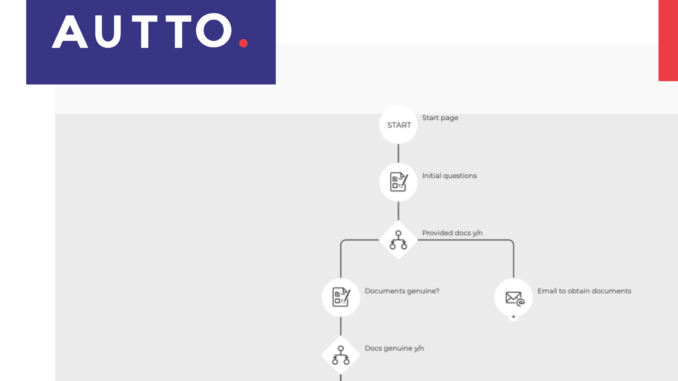
Workflow automation company, Autto, has unveiled a new capability that allows you to leverage data tables to build multiple interconnecting workflows that update in real-time, rather than building isolated workflows, each with their own data source.
As Autto explained to Artificial Lawyer, instead of using traditional, static spreadsheet platforms – such as Excel – in isolation, users of the platform can build and manage data sets within it.
Co-founder, Ian Gosling said that corporate legal teams and law firms could take an Excel spreadsheet, perhaps that they had used in the past to record key data, move that into Autto’s platform and then run multiple workflows that connect to it.
There is a growing interest in workflow systems – often referred to as no code or low code platforms – that include for example, Bryter, Neota Logic and Autologyx.
In many cases these are used by clients to improve one very specific work process, and the ability to build an entire ecosystem of interconnected workflows would appear to be useful.
As with other platforms of its type, Autto offers an intuitive visual interface that allows a user – without the need for any coding experience – to build a workflow. For example, creating a dialogue box on a desktop to guide a lawyer through a decision process to create a document, complete a form, or to approve an action and move a legal matter forward.
Elements involved in these workflows can include, among others, triggers to send emails, or for esignature, to create PDFs, to introduce conditional gateways, and to connect to databases – as explored above.
The goal is not to replace higher value tasks, but to provide ‘the plumbing’, as it were, to enable people to work more efficiently – and to leverage data already inside the business more effectively.
But, what can be built is really up to the imagination of the users. Such tech can be leveraged to produce quite complex networks of workflows that are central to a business.
Or, to sum up, as Max Cole, co-founder, said: ‘It has a transformative effect when data can be called on by different workflows.’
Beyond this new capability the company noted that the SME sector has not made much use of automation, even though in many cases it’s not that expensive to utilise workflow tools.
Artificial Lawyer also asked Cole and Gosling about ‘no code’ i.e. zero coding needed vs ‘low code’ i.e. some coding input needed to build a workflow.
Gosling replied that they prefer not to think in terms of either, though if they had to pick one it would be no code that best described them. The logic is that talking about code means looking at things from a developer’s perspective. The idea is to focus on data flows that a user is dealing with in their day-to-day work.
For example, we’d never say: buy this phone, it’s a no-code phone – we just expect there to be no coding involved to use that piece of technology. In short, while there may be a ton of software beavering away behind the scenes, the user just wants things to work.
Come Along to Two Great Artificial Lawyer Conferences:
Legal Innovators California – June 18 – San Francisco – an all-day conference focused on the intersection of technology and the business of law.
and,
Legal Innovators London – Now over two days – October 7th and 8th – one day on legal services providers, and one day focused on inhouse legal teams.

Created by Artificial Lawyer and organised by Cosmonauts.
4 Trackbacks / Pingbacks
Comments are closed.